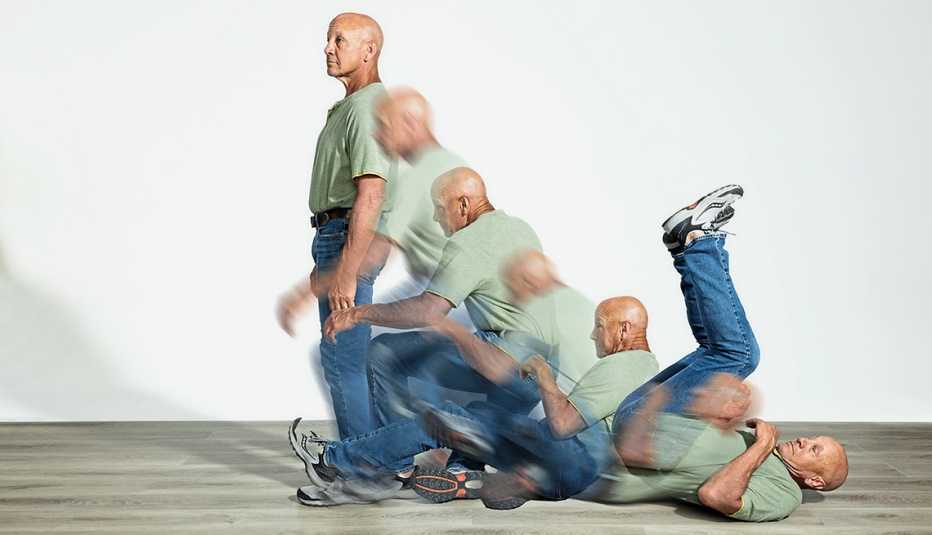AARP Hearing Center


In the new movie Indiana Jones and the Dial of Destiny, you may think you’ll see Harrison Ford perform dangerous physical feats, just as he has in previous Indiana Jones films. Except you won’t. Thanks to his professional stuntmen, Ford, 80, has been able to play the charming adventurer for more than 40 years.
If only each of us had a stunt double for everyday hazards. “Most people trip and lose their balance,” says physical therapist Shantha Nithiananda, clinic director at the Fyzical Therapy and Balance Center in Atlanta, Georgia. “Falls are a leading cause of fatal and nonfatal injuries among older adults.”
Every year, about 36 million falls are reported among people over 65, about 3 million of whom wind up in the emergency room. We asked two highly experienced Hollywood stuntmen — Stuart F. Wilson, 61, who is a longtime stunt double for Bruce Willis and stunted on the last Indiana Jones movie, and Thomas DuPont, 52, who doubled for Harrison Ford in an earlier Indiana Jones movie and did stunts in two Pirates of the Caribbean films, among many others — to share their tips on how to fall safely.


The sideways fall
It is the number 1 cause of hip fractures, and the mortality risk of patients over age 65 with hip fractures is three times higher than the general population’s. If your feet get tangled ...
Do: Bend your knees, tuck your chin and keep your head lifted. Keep your arms close to your chest. Allow yourself to go limp, and collapse onto the outside of your bottom thigh. Then roll onto your torso and upper back.
Don’t: Fall on the bony part of your hip, which is how hip fractures happen. And don’t plant your arm down when landing, which could easily break your shoulder, elbow or wrist.


The backward fall
If a slick floor — or an overly affectionate toddler — sends you flying…
Do: Stumble backward — something we often do naturally when we’re losing our balance. As you do, tuck your chin to your chest and try to get your body (especially your butt) closer to the ground. Bend your knees into a deep squat, so you land on your butt, then round your spine and roll onto your back and shoulders. Keep your arms by your sides, out of harm’s way.
Don’t: Look up or extend your neck, which will guarantee that your head hits the ground first. And don’t try to stick your arms out behind you to catch yourself, as that will likely result in a broken wrist.































































More on Health
The Safest Way for Older Adults to Get Up From a Fall
Use these tactics if you ever take a spill
When Should You Get a Bone Scan?
And what the results might mean for your overall health
10 Risks for Osteoporosis — and Its Early Warning Signs
Know the habits that can weaken your bones — and how to spot the changes early on